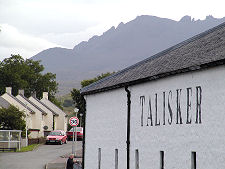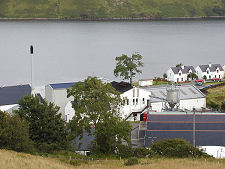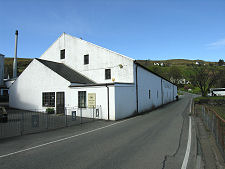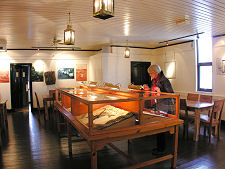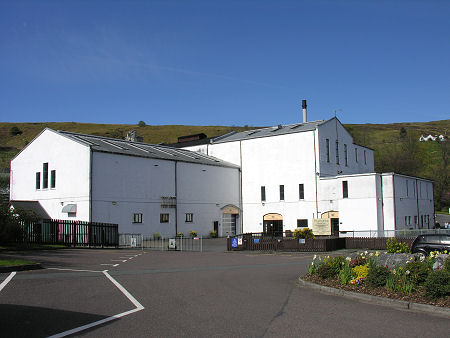 Talisker Distillery |
Talisker is the only distillery on the Isle of Skye. It stands on the western shore of the fjord-like Loch Harport at a point several miles from the open sea, in the village of Carbost. The nearby pier is a reminder of the days when raw materials arrived, and the finished product departed, aboard traditional Clyde puffers. These were the small steamers which for a century until the mid 1900s provided the main link with the outside world for coastal communities the length and breadth of the Highlands and Islands of Scotland.
For anyone knowing anything about whisky, the name Talisker has a special ring to it. The single malt scotch whiskies produced here are characterised by a powerful and peppery taste that has more than a hint of the sea and is moderately peaty. It is with good reason that it has been referred to as "the lava of the Cuillins". And although a number of different ages, finishes and vintages of Talisker are available, perhaps the most impressive thing is that even the "ordinary" Talisker you find in the shops at home, the 10-year-old bottled at 45.8% alcohol by volume, is consistently regarded by experts as one of the very best single malt whiskies available.
So the little village of Carbost is not just home to a distillery, it is home to the distillery responsible for producing some of the world's best known, best loved, and most distinctive single malt whiskies. This can have the effect of leading you to believe that at Talisker Distillery you will find a globalised, industrial-scale operation. And the absence of the traditional mark of the distillery, the pagodas that still sit on top of (usually unused) kilns in many Scottish distilleries, gives some support to this prejudice, making Talisker initially feel more like a factory than a distillery: albeit a factory in a truly magnificent setting.
As they say, though: you shouldn't judge a book by its cover. This was never more true than at Talisker. What you find within the slightly unpromising exterior is a truly superb craft distillery operating on a surprisingly intimate scale. Coupled with this is a visitor centre whose staff seem to take pride in going beyond the call of duty to ensure that everyone has a truly memorable and enjoyable visit to Talisker. The result is one of the best distillery visits you are likely to find anywhere, to a distillery producing some of the best single malt scotch whisky you are likely to find anywhere.
The origins of legal distilling here date back to 1825 when Hugh MacAskill arrived on Skye from the small island of Eigg to take over the running of the Talisker Estate, centred on Talisker House. Even today this is a remote location, on the coast four miles west of Carbost. Hugh initially worked to drive up the income from the estate, using the increasingly common tactic across Scotland of "clearing" his tenants from their homes and using the old croft land to graze much more profitable sheep.
In 1830 Hugh MacAskill leased a site at Carbost on Loch Harport from the MacLeods, raised £3,000 (it probably helped that his brother Kenneth ran the bank in Portree) and built a distillery at Carbost. Hugh chose to name his new distillery after his estate, Talisker, rather than the village in which it was located, Carbost. Nearly two centuries later, this still looks to have been a good choice.
Not everyone locally welcomed the distillery. The former parish Minister, Roderick Macleod, declared the distillery to be "one of the greatest curses that... could befall it or any other place". He seems to regard this as a much greater evil than MacAskill's earlier clearance of his tenants from land their families had occupied for generations.
Despite some local opposition, Talisker's name and fame quickly spread far and wide, and in 1880 Robert Louis Stevenson referred to "The king o'drinks as I conceive it, Talisker, Isla or Glenlivet". In 1885 Talisker was going from strength to strength when visited by Alfred Barnard on his tour of over 150 distilleries. At the time only a third of the distillery dated back to 1830, the remainder being the result of recent expansion, including a new kiln, still house and granary.
In 1960 disaster overtook Talisker. At the time the stills were heated by coal, and a valve on the No.1 spirit still was left open during a distillation. The spirit escaped down the outside of the still, caught fire, and the entire still house burned to the ground. It was rebuilt and equipped with new stills that were exact copies of those destroyed in the fire.
A tour of Talisker takes in most of the stages of distillation in a clear and sensible order, starting with the ingredients. There are no maltings at Talisker. Instead they bring in barley grown on the Black Isle and malted at Muir of Ord. But otherwise you get to see all the important parts of the process as far as the warehousing: and the high-level views of the two wash stills and the three low wines stills in the still room are especially good. You can find out more about Making Malt Whisky from our series of feature pages showing the stages in the process.
Especially striking at Talisker is the combination of new and old technologies. Managing the output of the stills using the traditional spirit safe is as much an art form here as anywhere else: but at Talisker a nearby computer screen allows all the other processes in the distillery to be monitored from this one location.
Part of the joy of any trip to a distillery - for the non-driving members of the group, anyway - is the chance to sample the product, which you can do at the small bar in the visitor centre. This is a particular pleasure when, as at Talisker, the product is so outstanding.
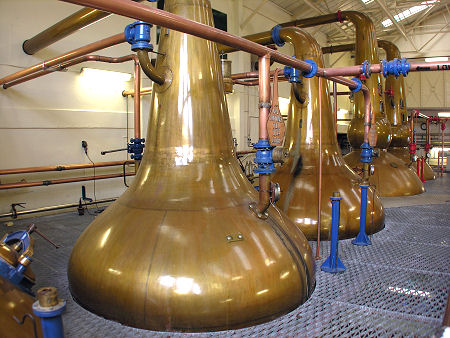 The Stills at Talisker Distillery |

|
|
|
Visitor InformationView Location on MapTalisker Distillery: STB 4 Star Visitor Attraction. Carbost, Skye, IV47 8SR. Tel: 01478 614308. talisker@diageo.com Grid Ref: NG 377 319 Distillery Web Page Opening Hours Tours & Admission What3Words Location: ///adopt.trainer.polka |
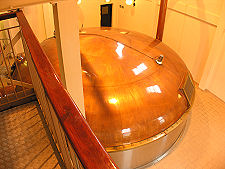 The Mash Tun |
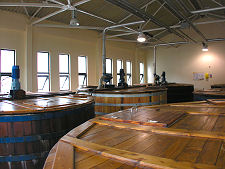 Washbacks |
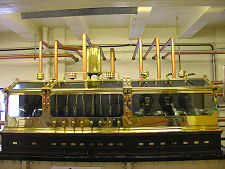 The Spirit Safe |
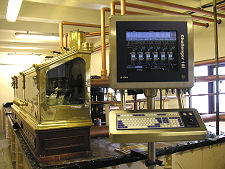 New Technology and Old |
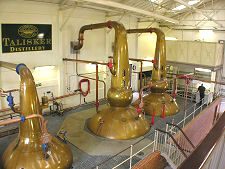 The Wash Stills |
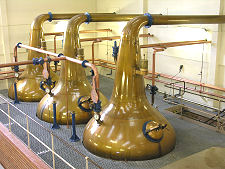 The Low Wines Stills |
 Bonded Warehouse |
 Barrels on Display |
